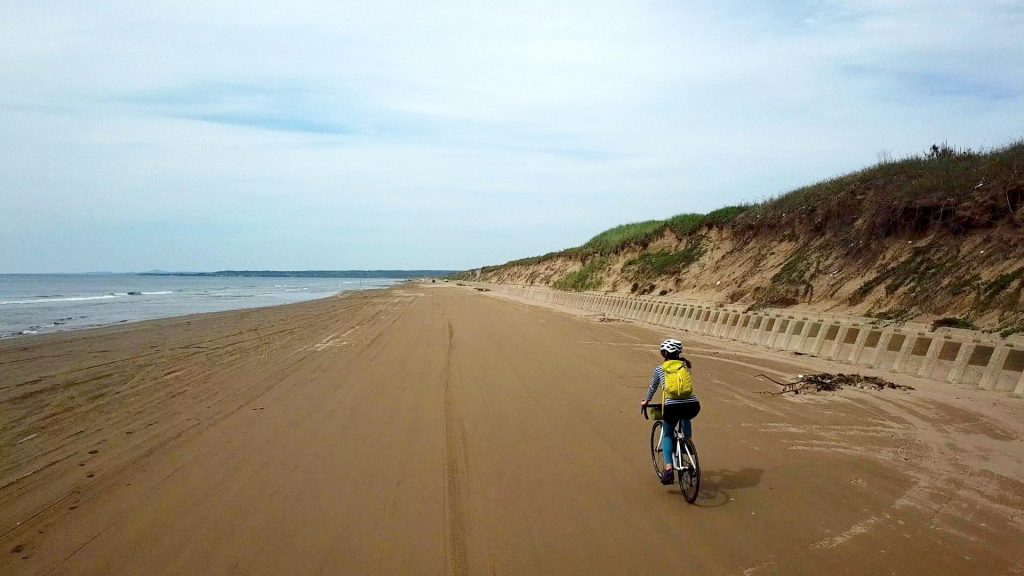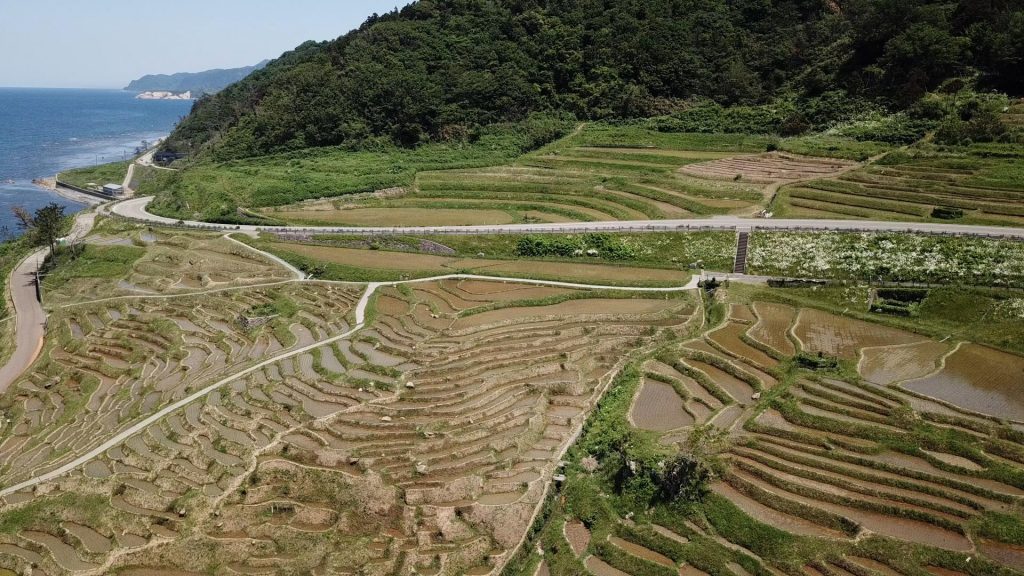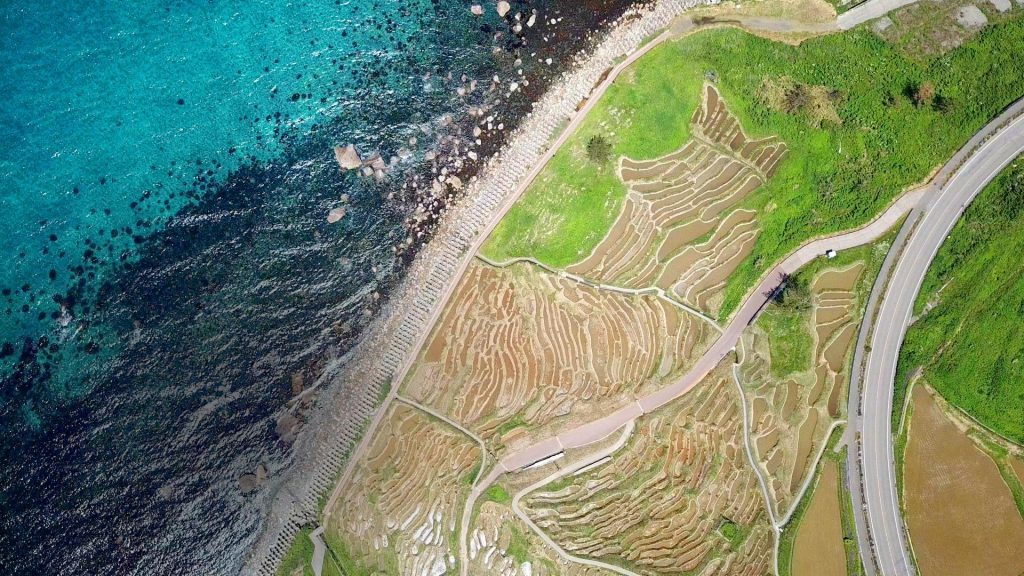Green-carpeted staircases leading to the ocean, rustic wooden houses lined up along the bay and glassy lagoons where dolphins await: time seems to stop on the Noto Peninsula. Noto extends about 100 kilometers into the Sea of Japan offering plethora of landscapes from flat sandy beaches to jagged cliffs. Public transportation is limited here, so the best way to explore the area is by cycling the Japan Eco Track, which stops at many of the attractions Noto Peninsula has to offer. Take the bullet train from Tokyo or the high-speed Thunderbird Express Train from Shin-Osaka Station or Kyoto to Kanazawa Station and begin your journey here.
Noto Satohama Route
The Noto Peninsula can be circumnavigated in 30 hours, starting with the Noto Satohama route in the south. It takes about one hour to reach the coast from Kanazawa Station. One of the highlights is cycling on the Chirihama Nagisa Driveway—eight kilometers of flat, firm sand.
Hakui-Ganmon-Satoyama Route
It gets more challenging as you make your way up north. Starting at Hakui Station, this route, which takes four to five hours, has several steep uphills but the views are worth it as sandy beaches are replaced with dramatic cliffs.
Oku-Noto Route
Traditional seaside towns have endured on the peninsula’s northern tip. Noto is characterized by its black-roofed buildings and well-preserved architecture: remnants of the past when this region was a thriving port town on a trade route. Nearby are the famed Shiroyone Senmaida rice terraces, 1,004 small rice paddies built into steep slopes leading down to the coast. Rice is planted in late May and greens during the summer, then turn a rich gold in autumn.
If you need a break from cycling, visit Wajima City’s bustling morning markets or hop into a kayak at Kinoura Village Inn. There are also short coastal hiking trails like the Tsukumo Bay Trail or opt for the longer 10-kilometer Misaki Nature Trail. Watch the sunset from the Rokkosaki Lighthouse or the peculiar-shaped Mitsukejima rock island.
Nanao Bay Route
Cycling across the Twin Bridge Noto to Notojima (Noto Island), where you can kayak or swim alongside wild Indo-Pacific bottlenose dolphins in Nanao Bay. After a long ride, unwind in a hot spring at Hyokkori Onsen or rest your feet in an ashi-yu foot bath at Wakura Onsen before making your way into Nanao City.
About Japan Eco Track
Montbell—Japan’s largest homegrown outdoor brand and retailer—started a series of events in 2009 called Sea to Summit. The goal was to invigorate local areas, holding events to experience nature through canoeing, cycling, trekking and other human-powered movement. While these events continue to be held in beautiful areas around Japan, the natural progression was to provide information and guides so travelers could experience these areas throughout the year at their own pace while learning the history and culture of the region and interacting with locals.
Japan Eco Track guides contain maps with designated routes of varying difficulty levels. Each guide includes information on local restaurants, guides, tour operations and other attractions. Along Japan Eco Track routes there are support stations located at affiliated stores and major transportation hubs such as train stations, airports and michi no eki (rest areas). Discounts and special offers are available at participating locations when travelers show the Japan Eco Track booklet. There are more than 15 guides, with new areas being developed and offered in English.







